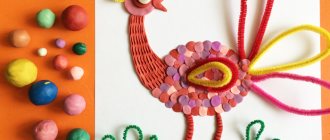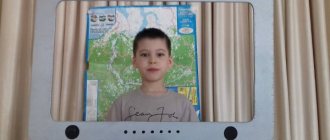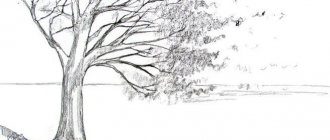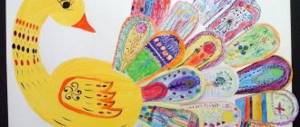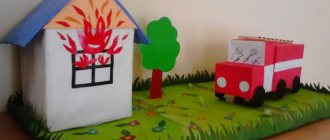Booklet for parents “Fine Arts Techniques”
Description of the slide: Methods and techniques of non-traditional drawing with children: 1. Printing by hand Method of obtaining an image: the child dips his palm (the entire brush) into the gouache or paints it with a brush and makes an imprint on paper. They draw with both the right and left hands, painted in different colors. 2. Using a signet The child presses the signet onto a stamp pad with paint and puts an imprint on the paper. To obtain a different color, both the bowl and the signet are changed. 3. Drawing with a feather Feathers of various sizes are dipped into gouache, and the pen is drawn across the sheet. To obtain an image of different colors and sizes, the feathers are changed 4. Finger drawing. The child dips his finger into the gouache and puts dots and spots on the paper. Each finger is painted with a different color. 5. Monotype. The child folds a sheet of paper in half and on one half of it draws half of the depicted object (the objects are chosen to be symmetrical). After painting each part of the object while the paint is still wet, the sheet is folded in half again to make a print. The image can then be decorated by also folding the sheet after drawing several decorations. 6. Drawing using the poke method. For this method, it is enough to take any suitable object, such as a cotton swab. We dip a cotton swab into the paint and, with a precise movement from top to bottom, make pokes on the album sheet. The stick will leave a clear imprint. The shape of the print will depend on what shape the object was chosen to poke. 7. Blotography. This drawing technique is based on a regular blot. During the drawing process, spontaneous images are first obtained. Then the child draws in the details to make it complete and similar to the real image. It turns out that a blot can also be a way of drawing, for which no one will scold, but, on the contrary, will also be praised. 8. Spray. The child puts paint on a toothbrush and hits it on the cardboard, which he holds above the paper. Paint splashes onto the paper. 9. Scratching. The child rubs the sheet with a candle so that it is completely covered with a layer of wax. Then mascara with liquid soap is applied to it. After drying, the design is scratched with a stick. The scratch paper can be colored or black and white, it depends on what kind of ink is applied to the sheet. 10. Nitography. Method of obtaining an image: dip the threads in the paint so that they are saturated, while the ends of the thread should remain dry. We lay the thread on a sheet of paper in any order, cover it with a clean sheet of paper on top, the ends of the thread should be visible. Pull the ends of the thread while pressing the top sheet of paper. Complete the necessary elements.
Information booklet for parents “How to prepare your child for school at home”
Tasmila Butaeva
Information booklet for parents “How to prepare your child for school at home”
Preparing a child for school is an issue that worries every parent . How to explain to a child who is accustomed to kindergarten or who is constantly at home with his mother that soon he will have to attend classes every day, follow the rules and routine, and do homework ?
Many people believe that if a child attends kindergarten, it means that preparation for school is fully provided by the staff of the preschool institution . Indeed, specially organized classes help children prepare for school , but without the help of parents such preparation will not be of high quality. The child needs constant consolidation of knowledge: discoveries made at home , he must check and consolidate in kindergarten. And vice versa, he needs to share the knowledge acquired in kindergarten at home .
Adequate attitude towards your “trials and errors”
, he is active in learning if an adult from the first days manages to become an assistant, a mentor for him, and not a controller and censor.
An adult's criticism and irritation interfere with learning, and children begin to be afraid to ask questions. They may develop a “loser complex”
. You can create a positive attitude in learning if the following rules are taken into account:
1. Now try to very gradually relate the daily routine to the schoolchild’s .
2. So that the child can hear the teacher, pay attention. How does he understand your verbal instructions and demands, which should be clear, friendly, laconic, calm. Don't frighten your child with future difficulties at school !
3. Preparation for reading : A 6-7 year old child should know all the printed letters of the alphabet, many can read syllables, and some can read entire texts. Despite such different training , all children get very tired of the reading process very quickly.
Alternate this activity with rest. Let the child “make faces”
in front of the mirror, pronouncing sounds clearly and loudly. This develops the articulatory apparatus.
4. Preparation for mathematics : success in this subject depends on the mastery and ability to move in three-dimensional space. Therefore, help your child become fluent in concepts such as “up and down”
,
“right-left”
,
“straight, in a circle, diagonally”
,
“more-less”
,
“horizontal-vertical”
, combine objects into groups according to one characteristic, compare, count within 10.
Some "rules of life"
that help him integrate into
school society , which parents should explain to their child .
What do you need to know?
1. Tell your child that during the lesson you cannot talk to other children, get up from your seat before the bell or without the teacher’s permission, about the need to obey the class teacher - about all the necessary rules that a young schoolchild .
2. Carefully convey to your child respect for teachers so that it would not be difficult or unusual for him to obey a stranger. The child must understand the leading role of the teacher.
3. Make a separate point about communication with schoolchildren - classmates - talk about the importance of friendship and teamwork, the inadmissibility of conflicts.
4. The child must understand the importance and responsibility of the learning process and be proud of his status as a student, and have a desire to achieve success in his studies. You, too, must show how proud you are of your little future schoolchild , this is very important for the psychological formation of the image of the school - the opinion of parents , for children, is key.
REMEMBER:
When preparing for school, you must remain a loving and understanding parent child and not take on the role of a teacher!
A child willingly does only what he can do, so he cannot be lazy. Try not to your child’s with anyone else’s, even if they are in favor of the child .
Your love and patience will serve as a guarantee for your baby to move confidently in his studies.
Compiled by: educational psychologist
T. A. Butaeva
Website of psychologist E.V. Pyatashova
REMINDER FOR PARENTS
PSYCHOLOGICAL READINESS FOR SCHOOL
“Being ready for school does not mean being able to read, write and do math. To be ready for school means to be ready to learn all this” (Wenger L.A.)
A child entering school must have a certain level of cognitive interests, a willingness to change his social position, and a desire to learn.
Information about your child’s motivation can be obtained by observing the role-playing game “School”.
Children who are ready for school prefer to play the role of students: they write, read, solve problems and answer at the board, and receive grades. Unprepared children and those younger in age choose the role of a teacher, and also concentrate on moments of change, the situation of coming and leaving school, and greeting the teacher.
The next condition for successful studies is the development of the child’s ability to overcome difficulties.
It is important to teach children to finish what they start.
Next, you need to prepare the preschooler for the inevitable difficulties in learning.
Awareness of the surmountability of these difficulties helps the child to treat his possible failures correctly.
When preparing for school, parents should teach their child analytical skills: the ability to compare, contrast, draw conclusions and generalizations.
To do this, a preschooler must listen carefully to a book or an adult’s story, express his thoughts correctly and consistently, and construct sentences correctly. After reading, it is important to find out what and how the child understood. This teaches him to analyze the essence of what he read, and in addition, teaches him coherent, consistent speech, and consolidates new words in the dictionary.
It is also important to cultivate in a child curiosity, voluntary attention, and the need to independently search for answers to questions that arise.
After all, a preschooler whose interest in knowledge is not sufficiently developed will behave passively in the lesson, it will be difficult for him to direct his effort and will to complete tasks.
Personal readiness for school also plays an important role.
This includes the child’s need to communicate with peers and the ability to communicate, as well as the ability to play the role of a student, and the adequacy of the child’s self-esteem.
To get an idea of a child’s self-esteem, you can offer him the “Ladder” technique.
Draw a staircase consisting of 11 steps. At the top, on the very top step, is the best person, and at the bottom, at the very bottom step, is the worst person, in the middle are average people. Invite your child to determine which step he belongs on. For younger schoolchildren, level 6-7 can be considered the norm, for preschoolers it can be higher, up to 11, but not lower than 4 - this is already a signal of trouble.
For a future student, perseverance, the ability to regulate one’s behavior, the ability to carry out a not very attractive task for quite a long time, and the ability to finish something started without giving up halfway are important to a certain extent.
Board games, construction sets, modeling, appliqué, and those games that continue for quite a long time help well in developing perseverance.
In addition to all of the above, the child must undoubtedly have social life skills and feel confident when away from home.
You need to be able to dress and undress yourself, change your shoes, tie your shoelaces, deal with buttons and zippers on clothes, and be able to use a public toilet.
First days of classes.
Start of school life
- a difficult time for any child. The thought that he will have to exist in an unfamiliar environment, to be surrounded by unfamiliar people, causes anxiety in almost any first-grader. Properly preparing your child for the start of school can go a long way toward alleviating anxiety.
1) Don't forget about your feelings
. If you yourself feel anxiety and excitement, you will probably pass it on to your child. Therefore, be calm and confident and do not let fears overshadow this important event in the child’s life.
2)
Introduce your child to his teacher in advance.
Visit his future classroom several times, let him sit at his desk and take a good look at everything so that the environment does not seem unfamiliar to the child, take a walk around the school and the schoolyard together.
3) Try to introduce your child to some of his classmates in advance.
It’s good if the child goes to school not alone, but with a classmate who lives next door.
4)
Tell your child about the time
allotted for lessons, breaks, lunch and a possible line-up before the start of classes, as well as when lessons begin and end.
5)
Ask your child how he feels
when going to school, about positive and negative impressions. Focus your child's attention on the positive aspects: interesting activities and the opportunity to make new friends.
6)Tell your child that it is completely normal to feel nervous for the first few days.
, and that all children without exception experience this. Reassure him that if possible problems arise, you will help him solve them.
Booklet Art activities with children
The main task
for artistic creativity:
Awaken emotional responsiveness to the aesthetic side of the surrounding reality.
In productive activities (drawing, modeling, design), it is necessary to help the child form and realize his own goal that corresponds to his personal interests and reflects his emotional impressions.
Ways of implementation:
1. Teach children to freely use various visual materials (felt-tip pens, colored pencils, watercolors, crayons, charcoal, ballpoint pens, stamps and seals, colored paper, natural materials).
2. Work on the child’s plan, teach how to set a goal in visual activity. Be sure to ask: “What are you drawing? What did you draw? “What are you creating? What happened?"
3. Upon completion of the work, it is necessary to give an assessment and reward for efforts. Works can be framed for an exhibition or become a gift for parents.
Dear moms and dads!
Why should a baby draw? Is it really impossible to live fully now and then without drawing? Of course you can. But how much a person will lose in his development by passing by this activity!
How many opportunities for development that nature has endowed him with will not be realized.
Every child is a creator by nature.
By engaging in visual arts, children have the opportunity to express their impressions, their understanding of the life around them and their emotional attitude towards it in artistic creativity: drawing, modeling, appliqué.
Go for it! Create! Try to plunge into the world of fantasy and creativity together! We are sure you and your children will love it!
Author: Maleeva O.N.
Visual activity of preschool children, as a type of artistic activity, should be emotional and creative in nature.
We must provide an emotional, imaginative perception of reality, form aesthetic feelings and ideas, develop imaginative thinking and imagination, teach children how to create images, the means of their expressive performance.
The learning process should be aimed at developing children's visual creativity, at creatively reflecting impressions from the surrounding world, works of literature and art.
Children's visual activities during a walk not only allow them to develop their imagination. Experiments with natural materials in situ will allow for analysis and comparison of the results obtained.
ACTIVITIES:
- Drawing with watercolors on paper with a brush.
- Finger painting in the sand.
- Application on sand paper.
- Paper applique.
- Modeling from plasticine.
- Drawing on sand with water.
- Modeling from salt dough.
- Application on paper made from natural materials.
- Drawing on paper with colored pencils, felt-tip pens.
- Drawing with colored chalks on the asphalt.


